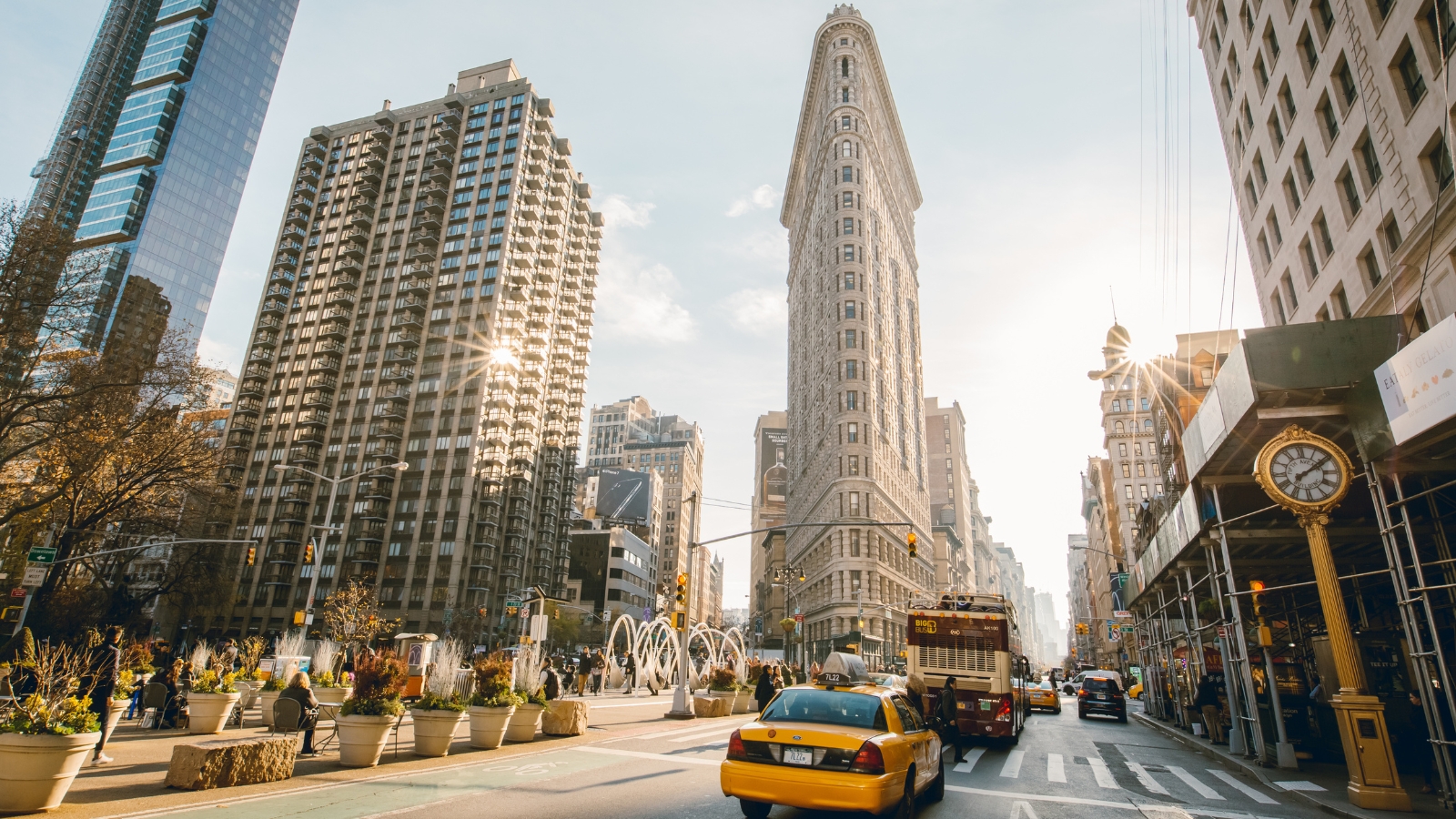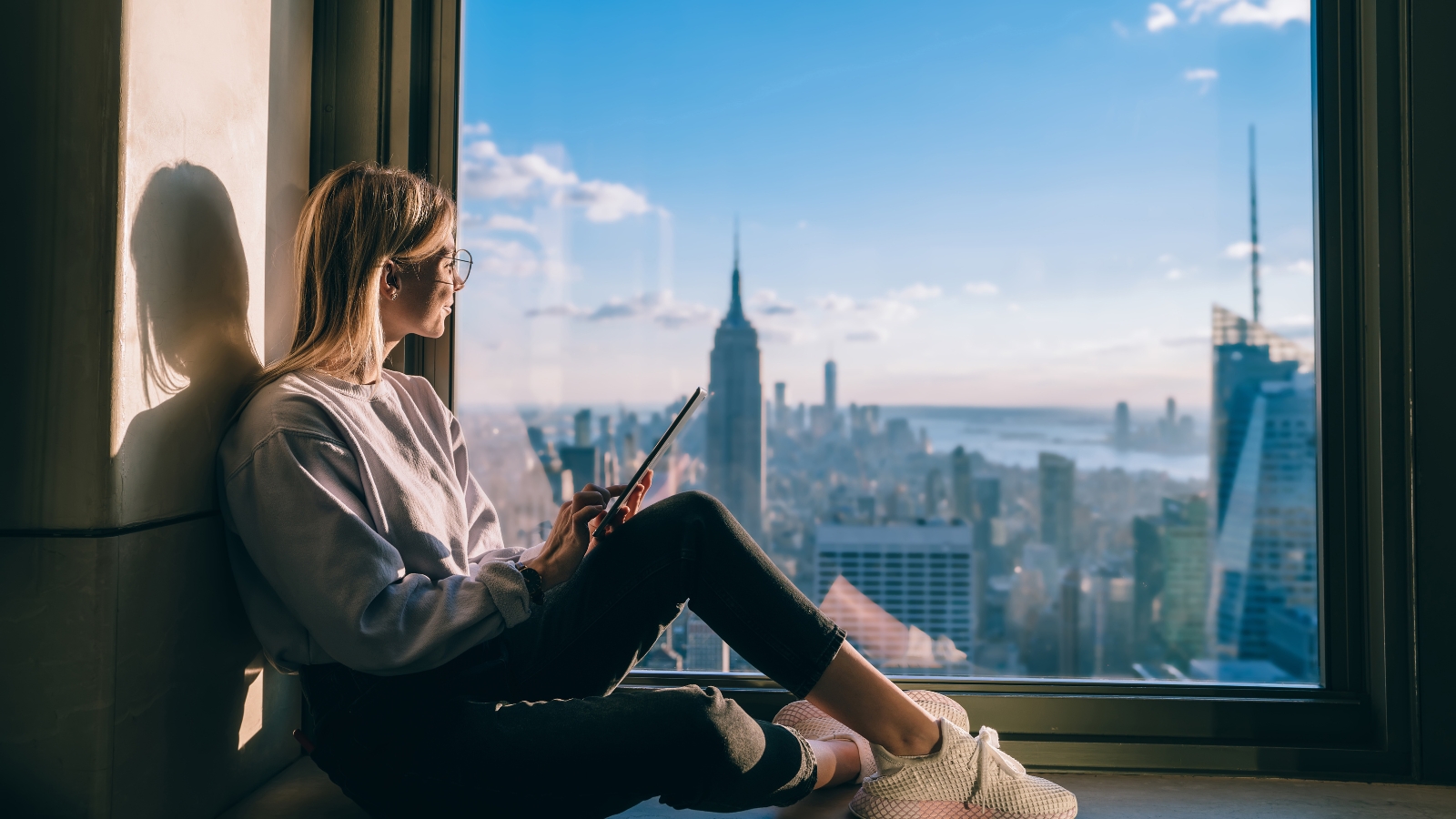During the early 1990s, I lived at the corner of Avenue A and 5th Street in New York, as urban as it gets. Amidst homeless guys slumped on the sidewalk near the fetid rotten trash and the constant blaring of car alarms, it’s hard to feel holy.
Instead of the overcrowded, dirty city, I longed for sacred space, an urban dreamscape: a holy grove of venerable, ancient oaks that pagans of old might have danced around; the hallowed ground of a secluded desert spot where wise elders could have conducted ceremonies; a windblown spot by the stormy ocean with rocks that might move a Shinto priest to enshrine them. How do you get to hallowed ground from the East Village when you haven’t got a dime?

A Revelation on St. Mark’s Avenue
On a sweltering, sweaty day in June of 1993, I strolled down St. Mark’s Avenue with my mind on a dream from the night before. I had some form of this dream regularly and still do, actually. It’s annoying. In the dream, I discovered I’d never actually finished my B.A. and had to go back to university and live in the dorms for one more semester.
As I walked and remembered, I happened to look up and notice an unusual relief carving of a family crest or shield on the pointy peak of a roof. It stopped me stock still. Even though I passed that way almost daily, I’d never noticed it before. And then the idea, the kernel of thought that turned into a practice. It felt like a sudden revelation, though in retrospect, I see how many books, reflections, and other practices funneled into the moment.

The Birth of a Sacred Urban Practice
Who knows how new ideas form. But at that moment, I perceived something very important: The best way to live in a sacred place is to make the place where you live sacred. I began that process then, and thereby, I mentally superimposed my dream onto the architectural feature I’d just noticed.
And so began the practice. I placed dreams using imagination and visualization to imprint images, sensations, and stories onto notable architectural features of the East Village, mostly buildings but also cracked sidewalks, soot-covered sculptures, and wall murals. My method for weaving my dreams into the city borrowed heavily from ancient Art of Memory practices and traditions of Australian aboriginal Dreamtime traditions. First, of course, came the dream. On June 27, I recorded the following dream in my journal:
I’m driving down a country road when a man in a truck pulls alongside me, driving parallel to me but separated by a grassy median. He says there’s someone up ahead who wants to talk to me. Four children (three girls and one boy) stand in a cluster by the side of the road so I pull over, wondering if I know them. They seem to recognize me. I get out of my car and approach them and they all congratulate me on my accomplishment, maybe a paper I published. I realize that the children are the seasons. The girls are Spring, Summer and Fall and the pale, thin boy is Winter. They are elementals. Two of the girls, Summer and Spring, and I fall into conversation while Fall and Winter wander down the road, picking berries from bushes along the roadside.

Dream Placement in Urban Architecture
At this point, I surfaced close to consciousness and became aware that I was dreaming. I remembered the content of my conversation with Summer and Spring, though by the time I woke up, I had forgotten it. Then I sunk back down into sleep.
A woman in a bright pink, high-waisted, bodiced dress of the sort woman wore in the Middle Ages stands on a lawn next to a tall, black-clad man. Both have their backs to me. I’m watching, and perhaps following, a small ball that’s rolling along the ground. It rolls up and stops against the hem of her dress and as I look up I realize that the young man is Winter. He intends to do me harm. Paralyzed by fear, I freeze and he advances. I then realize that saying “warm” things, like “you look bright and sunny today,” or “warm greetings to you,” makes him cringe and retreat. I back up slowly repeating such phrases.
Architectural Hyperlinks to Dream Worlds
I placed this dream on 3rd Street, between Avenues A and B, moving west from a Church located midway down the block. First, I broke the dream down into discrete images; then, I visually associated each discrete part of the dream with prominent features of the architecture, arranged in linear sequence so the flow of the eye naturally imitated the narrative.
Memory and Urban Exploration
To understand the method, look up right now at three things near you. Now take the nursery rhyme “Jack Sprat could eat no fat, his wife could eat no lean, and so between the two of them, they licked the platter clean” and divide it into three mental pictures. Imagine Jack, tall and thin, maybe munching a carrot. Then think of his wife, short and wide, enjoying a piece of chocolate fudge. Finally, visualize the platter, only a few scattered crumbs and the marks made by licking tongues.
Associative Memory in Urban Spaces
Attach your mental image of Jack to the first of the three things you’re looking at, the mental picture of his wife to the second, and your imaginary platter to the third. Run your eye over the three things, and there you have the nursery rhyme. If you really put your attention toward associating your images with your things, seeing them will remind you of the rhyme forever.
In the same way, the church puts me back in the dream whenever I pass by. The man in the truck who opens the dream, juxtaposed against the massive wooden doors of the church, puts me at the beginning of the story. The children’s congratulatory comments run along the sill of the stained glass window to the left of the door; the children as seasons follows the distinct edge of the church upwards from the window.
Dream Narratives Embedded in City Landmarks
My conversation with Summer and Spring continues across the pointy tops of the bars over the windows of the building next to the church; the woman and man in odd garb are superimposed onto the ancient, weathered lintel atop that building’s door; the rolling ball and fear of the young man extends over the rusted pipe connected to the outside of building; and my escape rests along the decorative molding just above the pipe.
The various architectural elements act like hyperlinks into my dream world. Whenever I glimpse one of those features, it brings me back into the dream. Have you ever walked into a place where you spent a lot of time as a kid and experienced a visceral hit of how you actually felt back then? It’s a little like that.
Palimpsests of architecture and the narratives of my psyche proliferated, layered, and provided increasingly meaningful mappings of the surroundings of my day-to-day life. Over time, the East Village became an overlapping stratum of city and dream.

Dreamscapes and Cityscapes Merge
At the back fence of the (now sadly gone) Miracle Grill restaurant, a coyote who can achieve the putrefaction stage of the alchemical process whispers from behind a bush. He has advice that I don’t quite understand. Along the edge of Thompkins Square park, a goddess in flowing white robes with feathery wings seems to float before me though she actually lives on the moon; a devotee owl flies through a midnight blue sky on his way there to retrieve her.
On a complicated set of pipes running along the side of the GE building at Avenue A and Fifth Street, mischievous children throw stolen shoes into snow banks. The shoes float up into the air and become birds.
These dream sites acted as portals. Mundane acts in the normal routine-walking home from the subway, riding my bike to the store for tomatoes, leaving my apartment to meet friends-would turn into trips through magical realms of my own creation.
There I’d be, strolling along, stuck in my own interior monologue, when some bit of dream would catch my eye: A playground fence onto which I had grafted a brother/sister superhero team about to battle each other on elephants or an ancient porcelain drinking fountain encoded with the experience of jumping through a labyrinth of cactus. The minute I saw the thing, whoosh, I’d find myself back in the dream. Momentarily, internal and external worlds merged.
Reflecting on the Shared Human Experience of the Urban Dreamscape
Dreams are a strange form of consciousness, profoundly interior and personal yet also in deep interplay with the external world. Everybody dreams. What a bizarre experience for all of humanity to share! Every person you know or have ever heard of, alive today or from antiquity, has experienced impossible interactions in a strange world composed of waking-life traces, personal impressions, and emotions.
We create these interior worlds in the deepest parts of our psyches, and then we have strange subjective experiences there. And no matter how strange what goes on in this place seems to you right now, at the time it makes total sense.
Pulling those experiences out again and overlaying them onto consensus reality provides a fascinating meditation on the interplay between and overlap of self and other. In the moments when an architectural elements carries me into a dream, I find myself simultaneously in the private world created by my sleeping psyche and in the concrete space of New York City, the one everybody else sees as well. In some ways, we all see the same city.
But the deeper experience of the place lies in the meaning we create there. The restaurant where you and your lover had your first date matters more than the one down the street. A store awning from one of my dreams has special power; it can be a portal into a world where women fly through Peter Max skies.
Which version of the city is more real, the one made partly of dreams that only I enter, the one marked by your romance, or some conceptual place devoid of any of the meanings we private overlay on top?
The Urban Dreamscape taught me about interiority and space, about meaning and how we create and understand it. I learned to linger at the transitional border between dream and waking, internal and external. And every once in a while it all connected. The subject I am now met the one I am in dream worlds, and those objective dream realms and city around me merged.
Now I lived in a place that shimmered back and forth between tenements and rusty pipes and a deep ocean paradise where I can breathe water. I had discovered a way of transforming the grimy, asphalt neighborhood of the East Village into sacred space.
I live in San Francisco now. The East Village still offers up portals between waking and dreaming realms, but in a new place, I had to start all over again. It’s painful to leave behind such intimate traces of psyche on city. But it’s a fine lesson on the ever-shifting nature of both of those things.













